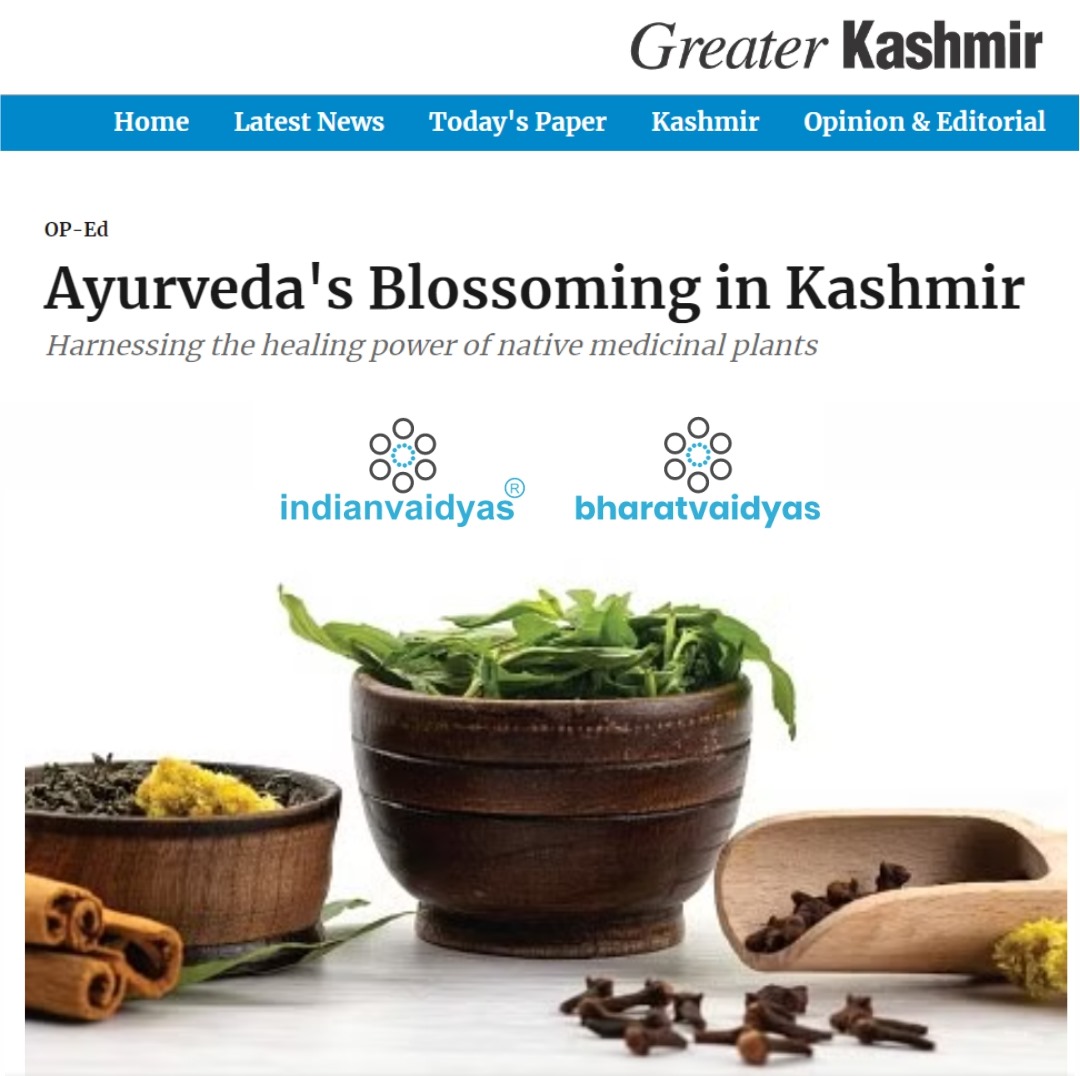Ayurveda's Blossoming in Kashmir
20-Sep-23 05:01:20

Harnessing the healing power of native medicinal plants
In a recent and significant development for healthcare in the picturesque valley of Kashmir, Lieutenant Governor Manoj Sinha has taken a bold step toward establishing an Ayurvedic College and Hospital. This monumental decision comes as a testament to the growing recognition of Ayurveda's potential in promoting holistic well-being. At the inauguration of the three-day Ayurveda Parv, hosted by the Akhil Bhartiya Ayurveda Mahasammelan Trust, Ministry of AYUSH, and Directorate of AYUSH-J&K, LG Sinha voiced his support for the age-old practice. He highlighted the importance of Ayurveda in maintaining health, managing diseases, and strengthening the immune system. Such a move signifies the growing revival of this ancient system of medicine not only in Kashmir but also across India.
Ayurveda, often hailed as one of the world's oldest and most comprehensive medical systems, has its roots deeply embedded in the ancient texts of India, particularly in the Vedas, including the Atharvaveda. These ancient scriptures contain hymns and verses that elucidate the principles of healing and medicine, providing the foundation for Ayurveda as we know it today. It's a system of medicine that goes beyond treating just the physical body; it embraces the holistic approach of nurturing the body, mind, and spirit to achieve optimal health.
The cornerstone of Ayurveda is the concept of doshas, which categorises individuals based on their unique balance of vata, pitta, and kapha doshas. This balance is believed to influence a person's overall health and well-being. Ayurveda seeks to restore this equilibrium through dietary adjustments, lifestyle changes, and herbal remedies. In addition to these methods, Ayurveda incorporates therapies such as massage and yoga to promote healing and wellness.
Despite its ancient origins, Ayurveda has undergone various phases of development over the centuries, adapting to the changing times and evolving medical knowledge. From the Vedic period, which saw the inception of Ayurvedic concepts like doshas, to the compilation of the Charaka Samhita and Sushruta Samhita during the Samhita period, the system continually evolved. During the medieval period, Ayurveda interacted with Islamic and Persian medicine, resulting in further refinement and enrichment.
However, Ayurveda faced significant challenges during the British colonial period, when it was sidelined in favour of Western medicine. Despite this setback, Ayurveda persisted, especially among rural populations and traditional healers. After India gained independence in 1947, the Indian government embarked on a mission to revive Ayurveda and other traditional healing systems. Today, Ayurveda has not only regained its popularity in India but has also captured the attention of the global community, with people worldwide seeking its holistic and personalised approach to health.
In the context of Jammu and Kashmir, Ayurveda has found a fertile ground to flourish. The government's initiatives to establish Ayurvedic colleges, hospitals, Unani colleges, and AYUSH health and wellness centres demonstrate their commitment to strengthening the traditional medicine infrastructure in the region. Furthermore, the Ayurveda Parv serves as a platform for collaboration, scientific exploration, and awareness-building regarding the potential of Ayurveda in modern healthcare.
While Ayurveda's revival is remarkable in itself, one cannot ignore the region's bountiful gift of native medicinal plants. Kashmir is blessed with over 1,100 plant species known for their medicinal properties. These plants have been cherished for generations, with traditional healers employing them to treat a myriad of conditions, from common ailments to chronic diseases.
Recent scientific studies have validated the efficacy of many of these plants, offering exciting prospects for the development of new drugs and therapies. For instance, Saussurea bracteata, locally known as Bal-e-Kuth, has shown promise in cancer treatment and inflammation reduction. Arnebia benthamii, or Gaozaban, has demonstrated wound-healing and antimicrobial properties. These findings underscore the potential of Kashmir's medicinal flora in advancing healthcare.
As Ayurveda reclaims its rightful place in the world of medicine, Kashmir's native medicinal plants can play a pivotal role in shaping the future of healthcare. The region stands at the precipice of a new era, where traditional wisdom and modern science converge to offer innovative solutions for the well-being of humanity.
Conclusion
The establishment of an Ayurvedic College and Hospital in Kashmir is a monumental step toward preserving and revitalizing the ancient healing tradition. As Ayurveda rises, it brings with it the rich heritage of Kashmir's native medicinal plants, opening the door to a brighter, healthier future. This fusion of tradition and progress heralds a new era of holistic healthcare, where the natural treasures of Kashmir blend seamlessly with the timeless wisdom of Ayurveda.
SOURCE & CREDIT: GREATER KASHMIR